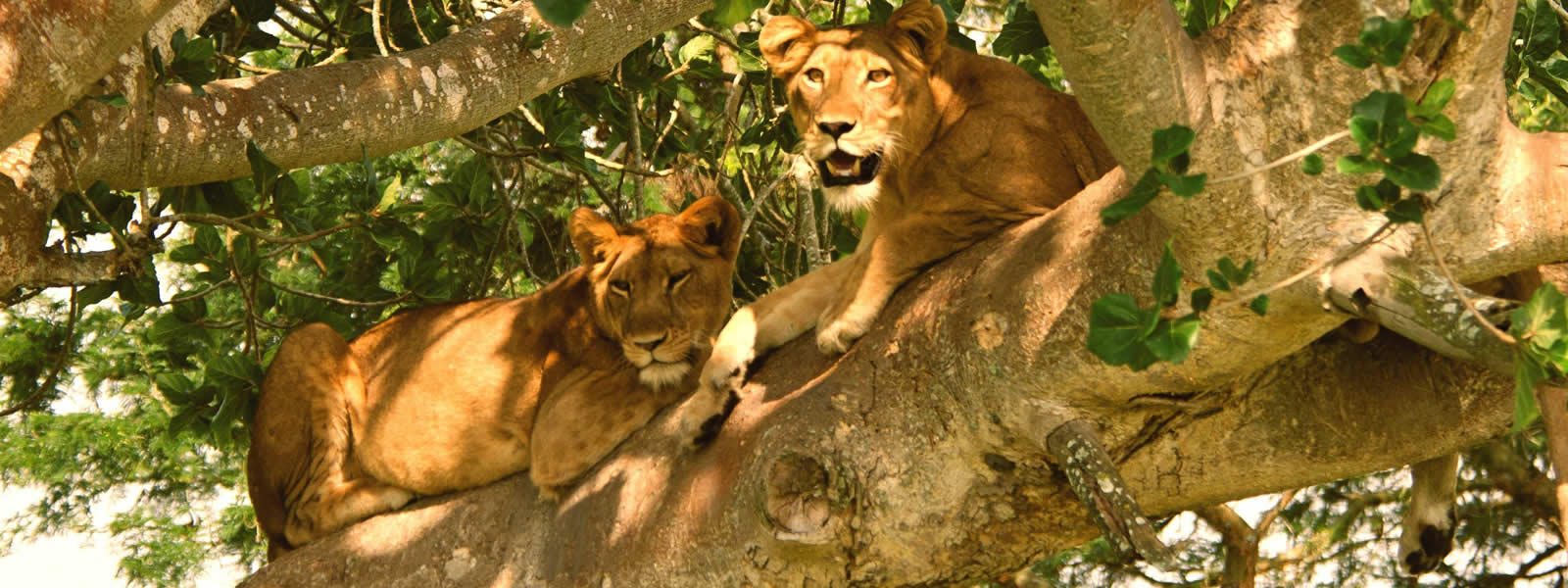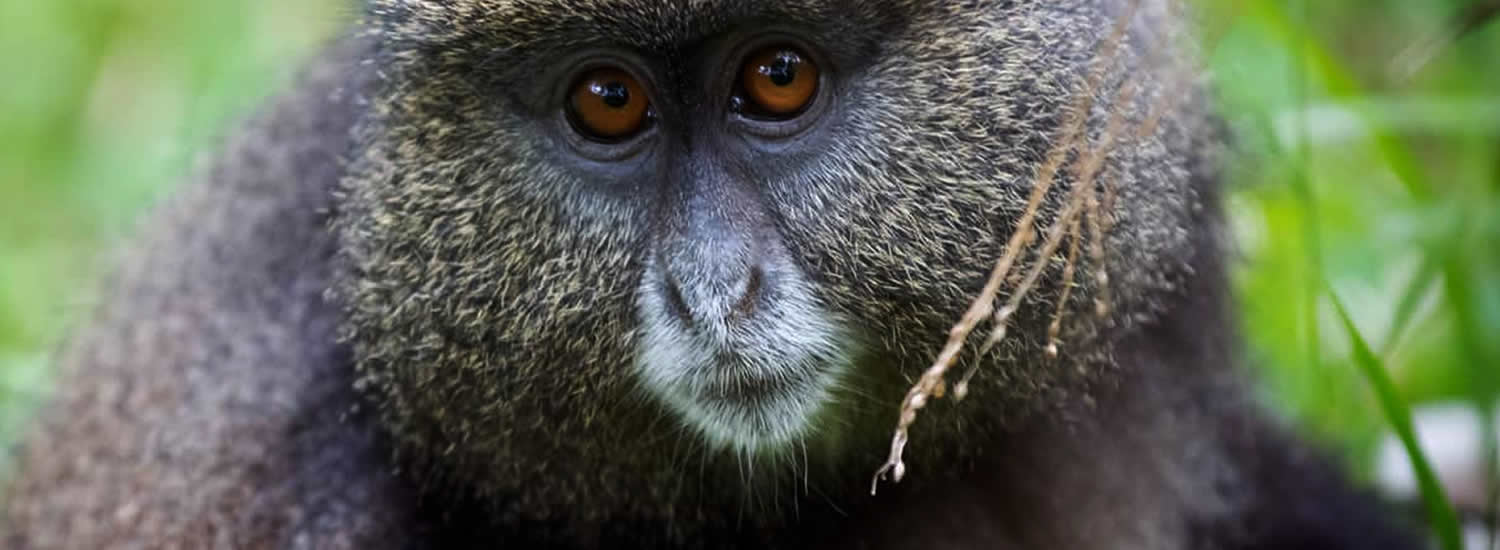
Safari Game drives are no doubt one of the highlights of any Uganda safari or African safari at large and can be combined with other safari activities that include gorilla tracking and gorilla habituation, chimpanzee trekking and habituation, mountaineering and bird watching safaris.
Safari game drives in Uganda involve going into the savannah plains of the different safari national parks, with a 4 x 4 WD safari van or safari land cruiser, with every traveller having a window seat. Safari game drives can last from 2-3 hours to a full day’s excursion, sometimes wrapped up with a bush breakfast.
What does a safari game drive mean?
The word ‘game drive’ means two different words; Game and drive. Game is referred to the wild animals that live and move freely in their natural habitats in the Savannah plains. Game includes elephants, giraffes, and African cape buffaloes among others.
Drive on the other side is referred to as driving with a vehicle- searching for game. So a game drive basically means driving with a safari vehicle in national parks and wildlife reserves searching for especially big game
Sunrise safari game drives
Game drives are a typical safari activity. We recommend going for a full day game drive for better game watching opportunities
Game drives normally start early in the morning at around 6 a.m. since this is when animals are most active.
You will always have early breakfast before you head out to the Savannah plains for the game drives. Unless you are doing a bush walk or another activity, you will likely go on two game drives per day while on safari. You will spot lions and hyenas hunting, vultures feeding on leftovers of predators, watch elephants, giraffes, and lots of antelopes that include the Uganda Kobs among others.
After the sunrise game drive, you return to the lodge for real breakfast, and relaxing since the animals rest too during the afternoon heat. But in most national parks in Uganda, in the afternoon you go for a boat safari, to watch animals and birds that come to rivers for water or go for a sun downer in some of the best scenic places in the different national parks.
Night safari game drives
In Uganda, one can go for night game drives in some of the National parks, with your safari guide and a ranger guide from Uganda Wildlife Authority. The night game drives may start from 4:00 pm returning at 10:00 pm latest. A spotlight is used to spot the different animals.
Night game drives offer a whole new perspective to a Uganda safari and allows travelers to experience the mysteries of the African bush after dark. Travelers will get a chance to see the nocturnal life such as porcupines, mongoose, leopards and other animals that love the dark.
Animal seen on a Ugandan safari
Expect to see the big four animals that include the elephant, leopard, African Cape Buffalo, and lion. With rhino tracking at Ziwa Rhino sanctuary, a sanctuary aiming at breeding and re-introducing rhinos into the wild, one is able to see all the big five animals.
Other animals to look out on the game drives include bush back, water back, Uganda kob, warthog, giant hog, giraffes, mongoose especially white tailed, jackals, Jackson’s hartebeest , zebras, ostriches, among others
There are quiet a number of birds too that can be seen while on game drives and boat safari. Every national park in Uganda has common and special bird.
Safari vehicles used for safari game drives
Safari games drives are usually guided and conducted from 4 x 4 customized safari vehicles. These are either customized safari vans or land cruisers with a pop up roof that makes it easy for wildlife viewing.
Most of these vehicles carry a maximum of 7 people, each person with a window seat, all this making wildlife or game viewing fun and easy to spot different animals
Why you should go for a safari Game Drive in Uganda
- You get guided around, learning about the different animals in their free nature
- You learn about wild animals and their way of life
- You come across many animals than you could possibly imagine
- You get to see the big 8 animals of Uganda (Elephant, Lion, Leopard, African Cape Buffalo, Rhino, Giraffe, Chimpanzee and mountain gorilla)
National Parks for the best safari game drives in Uganda
Below are some of the national parks and wildlife reserves in Uganda where a traveller can go for safari game drives
Queen Elizabeth National Park.
Queen Elizabeth National parkis one of the highest and rich bio diverse national parks in Uganda. It is home to about 98 mammals and is the most visited national in Uganda. It is located in Kasese in Western Uganda and offers great classic African safari game drives.
The park is home to countless animals that include elephant, leopard, lion, African Cape buffalo, a number of different types of antelopes, wart hog, giant forest hog, baboons, tree climbing lions, chimpanzees in Kyambura Gorge etc. The park has well developed game drive tracks through the Kasenyi area and North Kazinga plains and Ishasha sector that is home to tree climbing lions; to make game viewing possible and successful.
Travellers can go for an early sunrise game drive which is highly recommended, with a safari guide to look out for the early risers like the lions and hyenas. Sunrise game drives normally begin at 6.30 am for about 2-3 hours.
Murchison Falls National Park
Murchison Falls National Park is the largest national park in Uganda and offers great game drive experiences because of its different animal species found here.
Morning, afternoon and night game drives are available and do take place from the well maintained game drive tracks, with Buligi track in the northern bank of River Nile.
With a safari guide, one can see and photograph different animals that include leopard, lion, elephant, giraffes, mongoose, hyenas, jackals, baboons, patas and black and white colobus monkeys, warthogs, duikers, Oribi, Jackson’s Jackson’s hartebeest , leopard, tortoise different types of antelopes. For clients staying in the Southern bank, they can go to a new track called the honey moon track where some giraffes where trans-located to.
If you have time, don’t miss night game drives to be able to spot the nocturnal animals.
Murchison falls National park is well situated close to Budongo Forest, which offers an opportunity for chimpanzee tracking in this rain forest, and it is also close to Ziwa rhino sanctuary, where a traveller can go for rhino tracking, thus offering a great possibility to see all the big five animals plus man’s closest cousin; the chimpanzee.
Lake Mburo national park
Lake Mburo National Park, the smallest Savannah national park in Uganda is located conveniently between Kampala, Queen Elizabeth and Bwindi impenetrable National parks. It is the only park in Uganda with an entire lake within its borders.
It has a great network of safari game tracks through acacia woodland, wetlands, rocks, grassy areas and game drives here are not long because of its size.
Safari game drives in Lake Mburo National park normally take place at 6.30am for the sunrise game drives and 7 pm for the night game drives. These are the best times since animals are moving freely for food in the park.
Animals to look out for are Zebra, eland, impala (only park with impalas in Uganda), hyena, leopard, bush babies, baboons, buffalo, giraffes among others.
Apart from morning and night game drives, one can go for horse back safaris, walking safaris, water safaris and birding safari.
Kidepo Valley national park
Kidepo Valley National park is a semi-dessert national park located in the far North Eastern part of Uganda. CNN voted Kidepo Valley National park as one of the best national parks to visit in Africa. This is because of this beautiful endless scenery, African sunrises and sunsets, largest prides of lions and countless herds of African Cape Buffaloes.
About 77 mammal species call the national park home, making it perfect for classic African safari game drives that take place early morning, in the afternoon and in the night.
Game drives take place around the Narus Valley, morning ones starting at 6:00 am, and afternoon ones at 3 pm. The animals to look out for are elephants, lions which sometimes rest on rocks in the park, different types of antelopes, cheetah, bush baby, bush pig, jackals, giraffes and much more.
You can also go for a one hour long game drive to Kidepo Valley, which is very scenic. Kidepo Valley River is seasonal and during the dry season, the sand is so beautiful, adorned by palm trees. It should be noted that there is not much wildlife here, but it is part of the park where Ostriches are commonly seen. The drive takes you to Kanangorok hot springs and towards mountains, across the Sudanese border.
Toro Semuliki Wildlife Reserve
Toro Semuliki Wildlife Reserve is one of the less travelled reserves in Uganda but it is underestimated. There are three game drive tracks across the Toro Semuliki Wildlife reserve savannah. Animals to see here include the forest and savannah elephants, buffalo, water buck, Uganda Kob, crocodile and with a bit of luck you may see the pygmy hippopotamus. Other animals include the leopard and the bush babies.
Safari game drives in Toro Semliki Wildlife Reserve normally take place in the early morning, afternoon and in the night. The night offers great opportunities to spot the nocturnal animals like the white tailed mongoose among others.
Important points for safari game drives
- Off road driving during night and morning game drives is not allowed inside all national parks. This is to prevent vehicle-damage to the environment. Please don’t force your guide to do so. If caught, there is a fine to pay to Uganda Wildlife Authority, and one may be banned from the national parks
- Night game drives offer a great opportunity to spot nocturnal animals that include bush babies, genet cats, mongoose, aardvarks, and owls among others
- Bring sandbags to steady cameras
- A good binocular is recommended
- Wear layers during the morning game drives. You go for the morning game drives when the sun is rising and so the temperatures are low, but as the game drive goes on and the sun is fully out, it gets hot.
- Always wear a sun screen and an insect repellent
- If you go on a game drive, make sure you carry your sunglasses and a hat. In case you come back after dark, don’t forget to take something warm to wear.
- During a game drive you will have a possibility to stretch your legs, always stay close to the vehicle
- When you go for a bush toilet, make sure to tell your guide. Please do not go by your self
- In a lot of National Parks and Game Reserves it is not permitted to go off-road during your game drive.
General safari requirements
- Sturdy hiking boots
- Water proof trousers
- Long sleeved Shirt/blouse
- Water proof raincoat/jacket
- Sun Cream
- Gloves
- Insect repellent
- Backpack for carrying water/packed lunch
- Camera
- Light safari clothing’s i.e. shorts / sleeveless for the day
- Warm clothing / sweater for the evening
- Anti Malarial / Yellow fever vaccination















